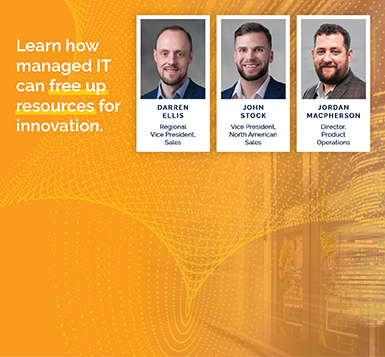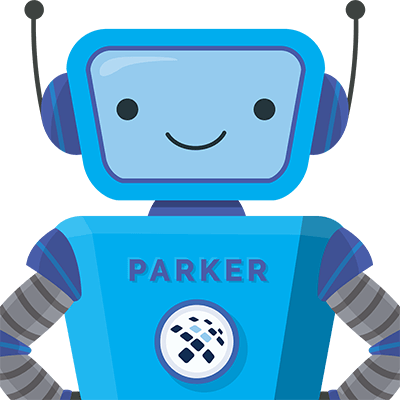10 Emerging Trends in Data Centers for 2022
Park Place Hardware Maintenance
By any measure, 2021 was a year of contrasts. Lockdowns were lifted, but many organizations chose to remain remote to some degree. In fact, 2021 might have shown us even more than 2020 just how much the entire world relies on data centers to keep things running, whether we’re working from the office or the home.
With this in mind, you must be able to stay updated on the emerging trends in data center design and functionality. It’s about more than just ensuring day-to-day reliability. It’s about optimizing your network and future-proofing your operations against both expected and unexpected forces (think 5G’s better speeds, but increased energy consumption, for instance).
10 Emerging Data Center Trends
In this post, we’ll explore 10 emerging data center trends for 2022 so that you go into the New Year armed with information and prepared for what’s coming.
1. Distributed Enterprises on the Rise
One of the most important things to prepare for in 2022 is the decline of office-centric networks and the rise of distributed enterprises. With many organizations remaining at least partially remote thanks to the many benefits offered by work from home (WFH) capabilities, decentralization is a critical step.
This will require considerable reconfiguration of existing setups to ensure they can handle distributed services. But why bother if everything seems to be working fine? Gartner points out that by 2023, “75% of organizations that exploit the benefits of distributed enterprises will realize revenue growth 25% faster than competitors.”
Study up on SD-WAN infrastructure for multi-site organizations to stay on the cutting edge of the industry.
2. The Rise of Hybrids
To be clear, this isn’t really a new trend. Hybrid data centers have been around for quite some time at this point. However, the trend toward them will continue to increase. You’ll see fewer and fewer organizations using purely on-premises or purely public networks because the blended capabilities that hybridization offers are simply too compelling to pass up.
What capabilities are those? Security and control are at the top of the list, particularly in comparison to the public cloud. However, data migration can be an incredible challenge (both for those moving from on-premises networks and those scaling from a public network). Working with a trusted provider of data and storage migration services like Park Place Technologies can help ease common cloud migration difficulties.
3. Even More AI
AI feels like it’s everywhere already, but 2022 will see that presence grow many times over. And we should all be fine with the increased role AI will play. Far from becoming our robot overlords, these algorithms now allow data centers to automate mundane processes and free human talent so it can be applied where it matters most. A side effect of increased AI demand could be increased compute demand. This means more heat removal that could necessitate liquid cooling solutions like immersion cooling for data centers.
4. Small Data
You’ve heard about Big Data (again and again), but have you heard about small data? Closely linked to edge computing, Forbes defines this as, “a paradigm to facilitate fast, cognitive analysis of the most vital data in situations where time, bandwidth, or energy expenditure are of the essence”. As distributed enterprises rise, so too will the need for data processing that does not rely on unlimited bandwidth and other resources.
5. The Drive to Go Green
Climate change is largely fueled by the consumption of fossil fuels. Data centers are huge consumers of electricity, and most electricity comes from less than environmentally friendly sources. To combat this (and to be perceived as doing their part to protect the planet), more and more data centers are using greener energy sources to at least augment their consumption.
6. Focus on Security
As mentioned when we discussed hybrid infrastructures, the need for better security has never been more pressing. Data breach after data breach and incursion after incursion have marked the last couple of years. Data center security is now of paramount importance, and new solutions like chip-level security can help safeguard both hardware and software against intruders.
7. Ultra-Scalability
Today, data centers experience dramatically varying demands for computing power. The answer to that challenge is ultra-scalable technology that allows them to scale up or down depending on the amount of processing power required. Dubbed hyper-scale data centers, these facilities offer outstanding capabilities to handle seasonal computing demands.
8. We’re Going Virtual
While VR and AR are big trends today, that’s not what we’re talking about here. Instead, we’re speaking of software virtualization. This trend drives down data center hardware-related costs by transforming storage (one only a function of hardware) into something virtual. In fact, we now have a new category of data center – software-defined data centers, or SDDCs. For the best performance, find the right balance of traditional data center vs. virtualized architecture for your unique business needs.
9. 5G Continues to Complicate Things
5G is in full roll-out and it has major implications for your data center in 2022 and beyond. It relies on ultra-fast data speeds and 0 latency, but to achieve that, data centers will need to invest in new hardware and software. Failing to do so could mean your data center gets left behind.
10. Ultra-Fast Memory
Remember the days when storage almost exclusively meant hard disk drives, and data speed was determined by disk read/write speeds? Those days are pretty much behind us. Spinning hard disks are being replaced by solid-state drives and flash memory, as well as virtual storage. It might not be long before you say goodbye forever to traditional data storage devices. You can also look for this storage infrastructure management trend to continue beyond 2022, with storage becoming faster, smaller, and more capable.
Is your data center ready for these trends? Get in touch with Park Place Technologies today to learn more about how we can help you prepare for and leverage these trends.



